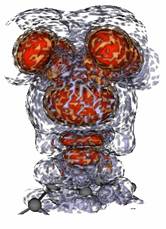Nanoscale Characterisation & Processing |
|
Main Navigation
|
Contact, Transport and Dissipation in Molecular Systems Although there is considerable speculation about the potential use of molecules in electronic device applications, several important questions remain unanswered. What happens when electrodes are attached to a molecule and how does this contact influence charge transport between the two systems. Moreover, is there a potential drop across the molecule during current flow and if so how is energy dissipated? We are investigating these issues using a combination of STM and high resolution conductance imaging AFM. The former enables us to controllably study contact between a tip and a single molecule at temperature as low as 5K. The latter allows us to form gated molecular assemblies where the different states of the molecule can be investigated.
|

